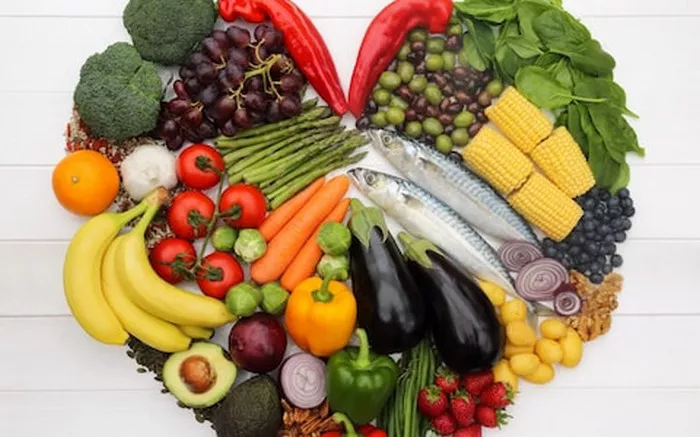Cooking on a tight budget doesn’t have to mean sacrificing flavor or nutrition. With some creativity and smart shopping, you can prepare delicious, healthy meals without breaking the bank. This article will explore a variety of meal ideas, tips for saving money on groceries, and budget-friendly cooking methods. Whether you’re cooking for one or feeding a family, you’ll find practical advice to make the most of your budget.
1. Start with the Basics: Budget-Friendly Staples
When you’re cooking on a budget, it’s essential to focus on affordable, versatile ingredients that can be used in a variety of dishes. These staples will form the backbone of your meals and allow you to stretch your budget while eating well.
Rice and Pasta
Rice and pasta are inexpensive, filling, and can be used in a variety of dishes. You can buy them in bulk, which is often cheaper, and store them for long periods.
Rice: Long-grain white rice is one of the most affordable pantry staples. Brown rice is also a great option, though it might cost a bit more.
Pasta: Pasta comes in many shapes and sizes, and it’s very affordable. Opt for whole wheat pasta for added nutrients if your budget allows.
Beans and Lentils
Beans and lentils are not only cheap but also packed with protein, fiber, and other essential nutrients. You can buy canned or dried varieties, though dried beans are usually more affordable and can be cooked in larger batches.
Beans: Black beans, kidney beans, pinto beans, and chickpeas are all great choices. Use them in soups, salads, or as a base for veggie burgers.
Lentils: Lentils are a fast-cooking, nutrient-rich option. They are perfect for soups, stews, or curries.
Canned Tomatoes and Vegetables
Canned tomatoes and vegetables are affordable and have a long shelf life. They can be used to make sauces, soups, and stews. When shopping for canned goods, look for those with no added salt or sugar to keep your meals healthier.
Tomatoes: Canned tomatoes are perfect for making pasta sauces, chili, or soups. They can also be used in casseroles.
Vegetables: Canned corn, peas, and green beans are inexpensive options. Frozen vegetables can also be a budget-friendly alternative to fresh produce.
Eggs
Eggs are one of the most affordable sources of protein and can be cooked in many ways. They’re versatile enough to be used in breakfast dishes, casseroles, and stir-fries, or simply boiled as a snack.
2. Plan Your Meals
Planning your meals ahead of time is one of the best ways to save money. By knowing exactly what you’re going to cook, you can avoid impulse purchases and minimize food waste.
Create a Weekly Meal Plan
Start by creating a weekly meal plan. Write down simple recipes that use the ingredients you already have, and try to incorporate the staples you’ve bought in bulk. Choose recipes that can be made in large quantities, like soups, casseroles, or stir-fries, and that will last for several days or can be frozen for later.
Use Leftovers Creatively
Leftovers are a great way to stretch your budget. Instead of throwing away extra food, think of ways to repurpose it for another meal. For example, roasted vegetables from dinner can be added to a salad the next day or blended into a soup. Leftover rice or pasta can be turned into a stir-fry with some vegetables and protein.
3. Embrace One-Pot Meals
One-pot meals are ideal for saving both time and money. They allow you to cook everything in a single pot, reducing the need for additional ingredients and minimizing cleanup. Many one-pot meals are simple, nutritious, and inexpensive.
Soups and Stews
Soups and stews are excellent budget-friendly options because they can be made in large quantities, and they’re very forgiving. Use inexpensive vegetables, beans, and grains as the base, and add a small amount of meat for extra flavor. A simple vegetable soup made with canned tomatoes, carrots, potatoes, onions, and garlic is both filling and cheap.
Casseroles
Casseroles are another great one-pot option. Combine rice or pasta with vegetables, a protein like beans or eggs, and a simple sauce to make a hearty meal. Tuna casserole is a classic, but you can also experiment with other ingredients like chicken, potatoes, or broccoli.
Stir-Fries
Stir-fries are quick, easy, and can be made with whatever vegetables and protein you have on hand. Use soy sauce, garlic, and some basic spices to flavor your stir-fry. You can serve it over rice or noodles, which are inexpensive and filling.
4. Cook with Seasonal Ingredients
One way to save money is to cook with seasonal produce. Seasonal fruits and vegetables are typically more affordable because they are more abundant. Visit your local farmers’ market or grocery store and take advantage of the lower prices for in-season produce.
Spring and Summer:
- Fresh tomatoes, zucchini, cucumbers, and bell peppers are perfect for salads and pasta dishes.
- Berries, peaches, and melons can be used in smoothies, desserts, or eaten on their own.
Fall and Winter:
- Root vegetables like potatoes, carrots, and sweet potatoes are hearty and versatile. They can be roasted, mashed, or added to soups.
- Winter squash, cabbage, and kale are also great budget-friendly vegetables in the colder months.
5. Buy in Bulk and Shop Smart
Buying in bulk can save you a significant amount of money, especially for items you use frequently, like rice, pasta, beans, and oats. Bulk buying helps lower the cost per unit, and it allows you to stock up on items that have a long shelf life.
Buy Frozen Produce
Frozen vegetables and fruits are often cheaper than fresh ones and can be stored for months without spoiling. Frozen peas, spinach, broccoli, and berries are just as nutritious as their fresh counterparts and can be used in a variety of dishes.
Look for Sales and Discounts
Take advantage of sales, discounts, and coupons when you can. Stock up on non-perishable items like canned goods, pasta, and rice when they’re on sale. Many stores also offer loyalty programs or discounts for bulk purchases.
6. Simple, Budget-Friendly Meal Ideas
Here are a few meal ideas that are both affordable and easy to prepare. These dishes are perfect for anyone looking to cook on a tight budget.
Vegetable Stir-Fry
A vegetable stir-fry is one of the quickest, healthiest, and most budget-friendly meals you can make. Use any combination of frozen or fresh vegetables you have on hand, and add rice or noodles as the base. Stir-fry with soy sauce, garlic, and a touch of oil for flavor.
Chili
Chili is an inexpensive, filling meal that can be made with beans, tomatoes, onions, and a few spices. If you like, you can add ground meat or vegetables to bulk it up. Serve with rice or cornbread for a complete meal.
Egg Fried Rice
Egg fried rice is a quick and affordable meal made with leftover rice, scrambled eggs, and any vegetables you have in the fridge. You can also add soy sauce or hot sauce for extra flavor.
Omelets
Omelets are a great way to use up leftover vegetables, cheese, and meats. You can make a basic omelet with just eggs, but adding a few extra ingredients like mushrooms, spinach, or cheese can make it feel more like a meal.
Baked Potatoes with Toppings
Baked potatoes are a cheap, filling meal that can be topped with whatever you have available. Try adding beans, cheese, sour cream, or sautéed vegetables for a satisfying dish.
7. Be Mindful of Portion Sizes
Controlling portion sizes is an important aspect of saving money on food. Overeating can lead to food waste and unnecessary expenses. Try to cook only the amount you need, and use leftovers for the next meal. Additionally, serving smaller portions can help stretch meals further, especially when paired with a side of rice or vegetables.
Conclusion
Cooking on a tight budget doesn’t mean you have to sacrifice flavor or nutrition. By focusing on affordable staples like rice, pasta, beans, and eggs, planning your meals, and cooking one-pot dishes, you can prepare satisfying meals without overspending. Take advantage of seasonal produce, buy in bulk, and get creative with leftovers. With a little planning and resourcefulness, you can enjoy a variety of delicious, budget-friendly meals that will keep both your stomach and your wallet full.
Related topics:



























